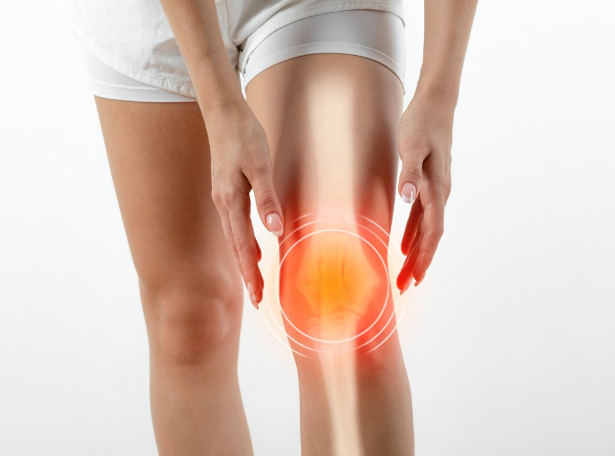Knee pain can sideline anyone. Here’s how you can relieve discomfort and stay active.
When a ligament in the joint, like the ACL, is torn, there may be an acute pain. It could be a dull ache or a throbbing pain, severe or mild. Sometimes the pain lasts only a few days and goes away on its own, such as when you overdo it as a weekend warrior and don’t really hurt the joint. In other situations, such as when a joint has arthritis, the pain could be chronic. You’re not alone if you have knee pain, though, regardless of how you feel about it.
Regarding the musculoskeletal system, the most common location for chronic pain complaints is the back. “However, the knee comes in second,” says Dr. Brian McKeon, an assistant clinical professor of orthopedic surgery at Tufts University School of Medicine in Boston and an orthopedic surgeon at New England Baptist Hospital. In fact, probably the most common complaint that people come into the orthopedist’s office for is some type of knee pain, says Dr. Nicholas Sgaglione, chair of orthopedics at Northwell Health, and a professor of orthopedics at the Donald and Barbara Zucker School of Medical at Hofstra/Northwell in Hempstead, New York.
Also read–JN.1 Coronavirus Variant Discovered: How Concerned Ought You To Be
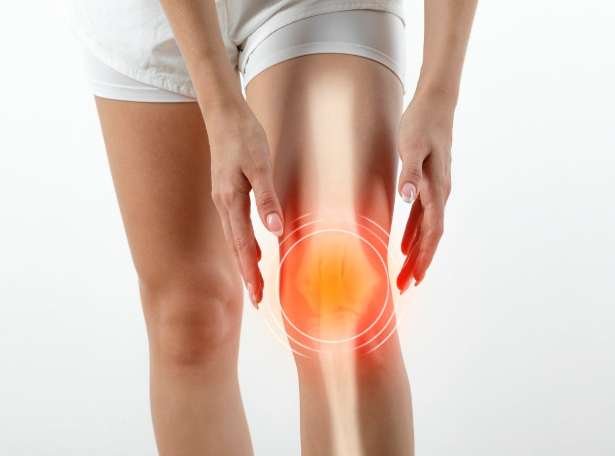
Types of knee pain
The type of knee pain one may experience has much to do with the construction of the joint itself. In short, there’s a lot going on in there. And because we’re bipedal—we stand on two feet—we put a lot of stress in the form of weight and movement on this large hinge-like joint. In fact, the knee is the biggest joint in the body, connecting the top and lower bones of the leg. Capping the joint is another bone—the knee cap, or patella. Between the leg bones are two crescent-shaped discs of shock-absorbing cartilage (the menisci) that protect and cushion the joint surface and bone ends. There’s also slippery articular cartilage that helps the bones glide smoothly as they move.
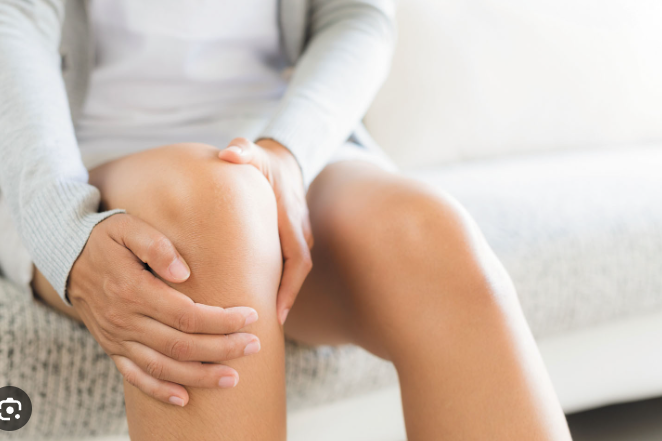
The thigh bone (femur) and the lower leg bones (tibia and fibula) are linked by ligaments, while tendons connect muscles to bone. The ligaments (bands of tissue) that stabilize the knee include the ACL (anterior cruciate ligament) in the middle of the knee and the MCL (medial collateral ligament) in the part of the knee, both connecting the femur to the tibia. Smaller, fluid-filled sacs called bursae around the knee also provide cushion.
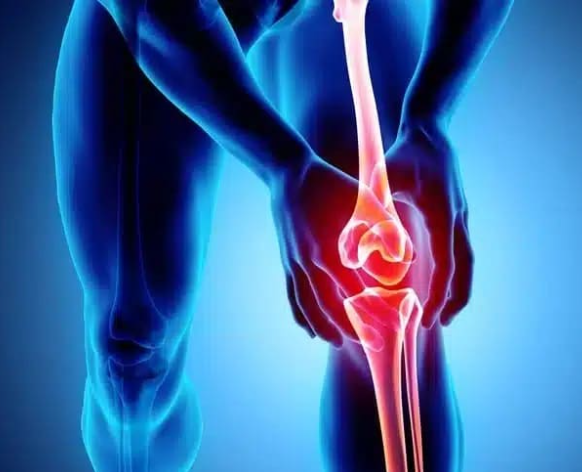
Causes
Knees can hurt for many reasons.
The following are a few of the most typical causes of knee pain:
- Trauma-based injuries, like a ligament tear or bone fracture.
- Ongoing wear and tear or overuse injuries (the pain may result from repeated smaller tears in muscle or tendon, for example).
- Arthritis.
- Tendonitis, or inflammation of the tendons of the knee.
- Bursitis – a condition that occurs when bursae become painfully inflamed.
- Infection.
- Other medical conditions, including autoimmune conditions like lupus, cysts.
- Problems with other joints, like the hips, that also cause knee discomfort.
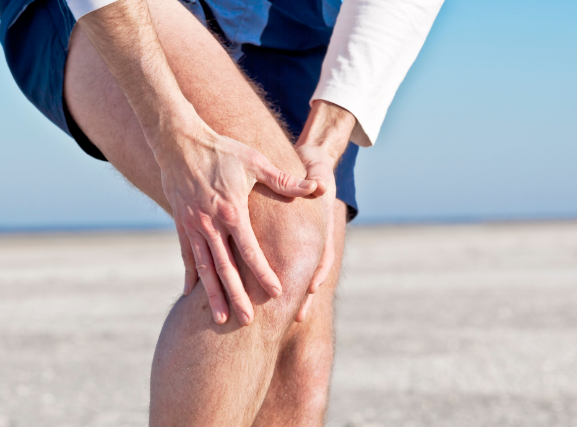
Risk factors
Factors that contribute to knee pain include:
- Being too heavy or fat.
- Years old.
- Past injuries to the knee.
- An inactive lifestyle that causes one’s muscles to become weaker or less flexible.
- Smoking.
- Involvement in a knee-stressing job or sport, like basketball, that requires repetitive jumping, squatting, and bending.
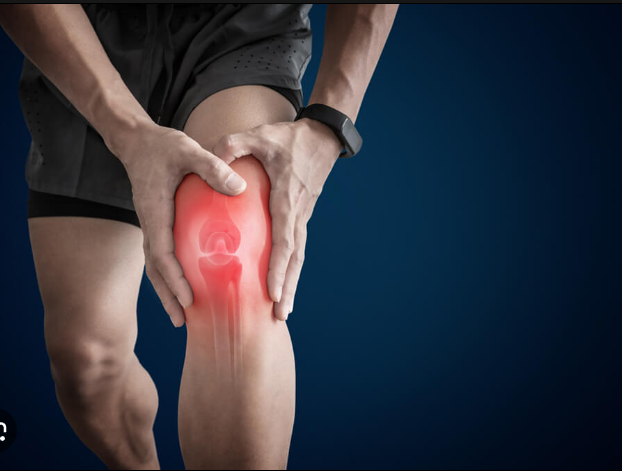
Symptoms
Pay attention not only to the knee pain itself, but also to associated symptoms. Those can include:
- Swelling.
- Stiffness – or loss in range of motion.
- Redness.
- A popping noise accompanying an injury.
- Clicking or other sounds when you move the knee.
- The joint feels hot to the touch.

Diagnosis
Patients can start by seeing a primary care provider, although orthopedic injuries are often referred to orthopedic specialists. The first step in diagnosis is to get the patient’s health history, a key component in any medical evaluation. “It starts with listening to the patient,” Sgaglione stresses. After that, a physical exam is performed. It’s especially important that this be performed by a health provider who is well-trained in diagnosing and treating musculoskeletal conditions, like a sports medicine specialist or orthopedist. Because joints can have an impact on one another—a hip issue can cause knee pain, for example—make sure you get your whole leg checked out. As needed, imaging such as X-rays and MRIs may be ordered as well to look more closely at the knee and confirm a diagnosis. But experts emphasize that the initial health history and physical exam are critical to understanding what’s going on with the patient.
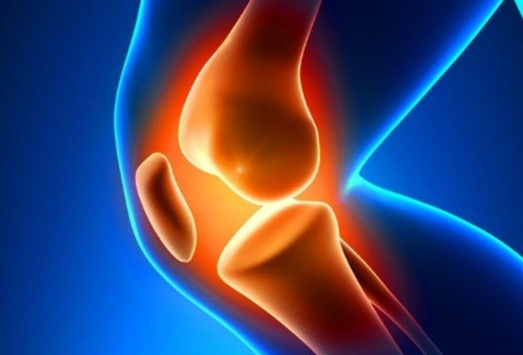
Treatment
The treatment or management of knee pain is as variable as the causes of pain itself.
- Self-Care
- Medication
- Injections
- Physical Therapy
- Acupuncture and Acupressure
- Surgery
- Staying Active
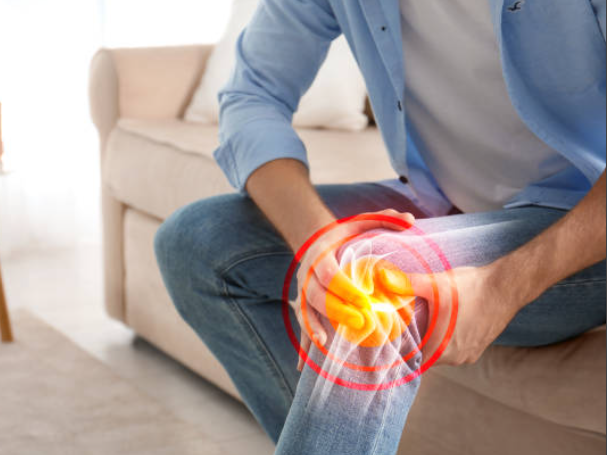
Also read-Schizophrenia : A Patient’s Guide To Schizophrenia And Its Symptoms
images source: Google
Disclaimer: The opinions and suggestions expressed in this article are solely those of the individual analysts. These are not the opinions of HNN. For more, please consult with your doctor.







